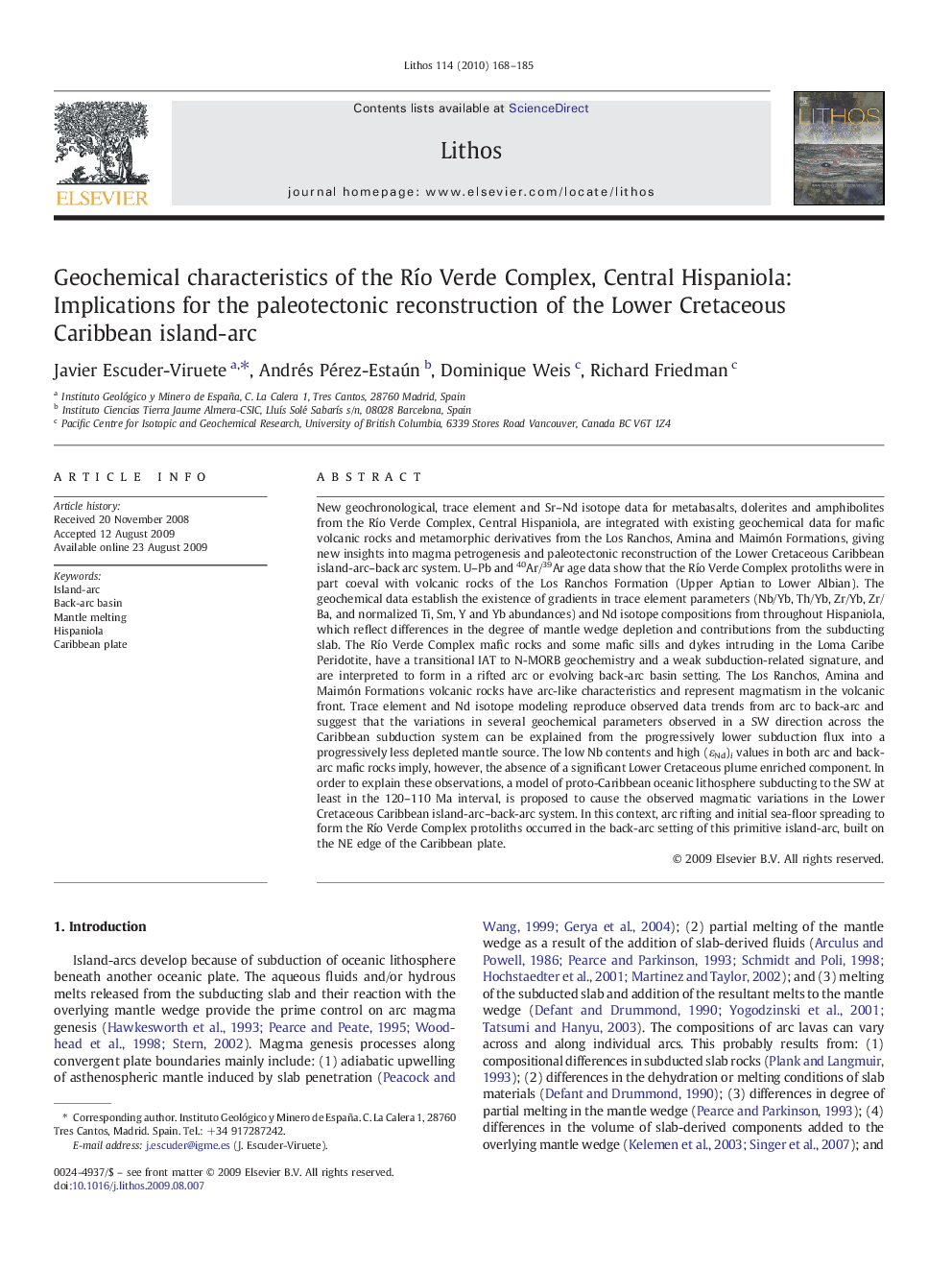| Article ID | Journal | Published Year | Pages | File Type |
|---|---|---|---|---|
| 4717311 | Lithos | 2010 | 18 Pages |
Abstract
New geochronological, trace element and Sr-Nd isotope data for metabasalts, dolerites and amphibolites from the RÃo Verde Complex, Central Hispaniola, are integrated with existing geochemical data for mafic volcanic rocks and metamorphic derivatives from the Los Ranchos, Amina and Maimón Formations, giving new insights into magma petrogenesis and paleotectonic reconstruction of the Lower Cretaceous Caribbean island-arc-back arc system. U-Pb and 40Ar/39Ar age data show that the RÃo Verde Complex protoliths were in part coeval with volcanic rocks of the Los Ranchos Formation (Upper Aptian to Lower Albian). The geochemical data establish the existence of gradients in trace element parameters (Nb/Yb, Th/Yb, Zr/Yb, Zr/Ba, and normalized Ti, Sm, Y and Yb abundances) and Nd isotope compositions from throughout Hispaniola, which reflect differences in the degree of mantle wedge depletion and contributions from the subducting slab. The RÃo Verde Complex mafic rocks and some mafic sills and dykes intruding in the Loma Caribe Peridotite, have a transitional IAT to N-MORB geochemistry and a weak subduction-related signature, and are interpreted to form in a rifted arc or evolving back-arc basin setting. The Los Ranchos, Amina and Maimón Formations volcanic rocks have arc-like characteristics and represent magmatism in the volcanic front. Trace element and Nd isotope modeling reproduce observed data trends from arc to back-arc and suggest that the variations in several geochemical parameters observed in a SW direction across the Caribbean subduction system can be explained from the progressively lower subduction flux into a progressively less depleted mantle source. The low Nb contents and high (εNd)i values in both arc and back-arc mafic rocks imply, however, the absence of a significant Lower Cretaceous plume enriched component. In order to explain these observations, a model of proto-Caribbean oceanic lithosphere subducting to the SW at least in the 120-110 Ma interval, is proposed to cause the observed magmatic variations in the Lower Cretaceous Caribbean island-arc-back-arc system. In this context, arc rifting and initial sea-floor spreading to form the RÃo Verde Complex protoliths occurred in the back-arc setting of this primitive island-arc, built on the NE edge of the Caribbean plate.
Related Topics
Physical Sciences and Engineering
Earth and Planetary Sciences
Geochemistry and Petrology
Authors
Javier Escuder-Viruete, Andrés Pérez-Estaún, Dominique Weis, Richard Friedman,
